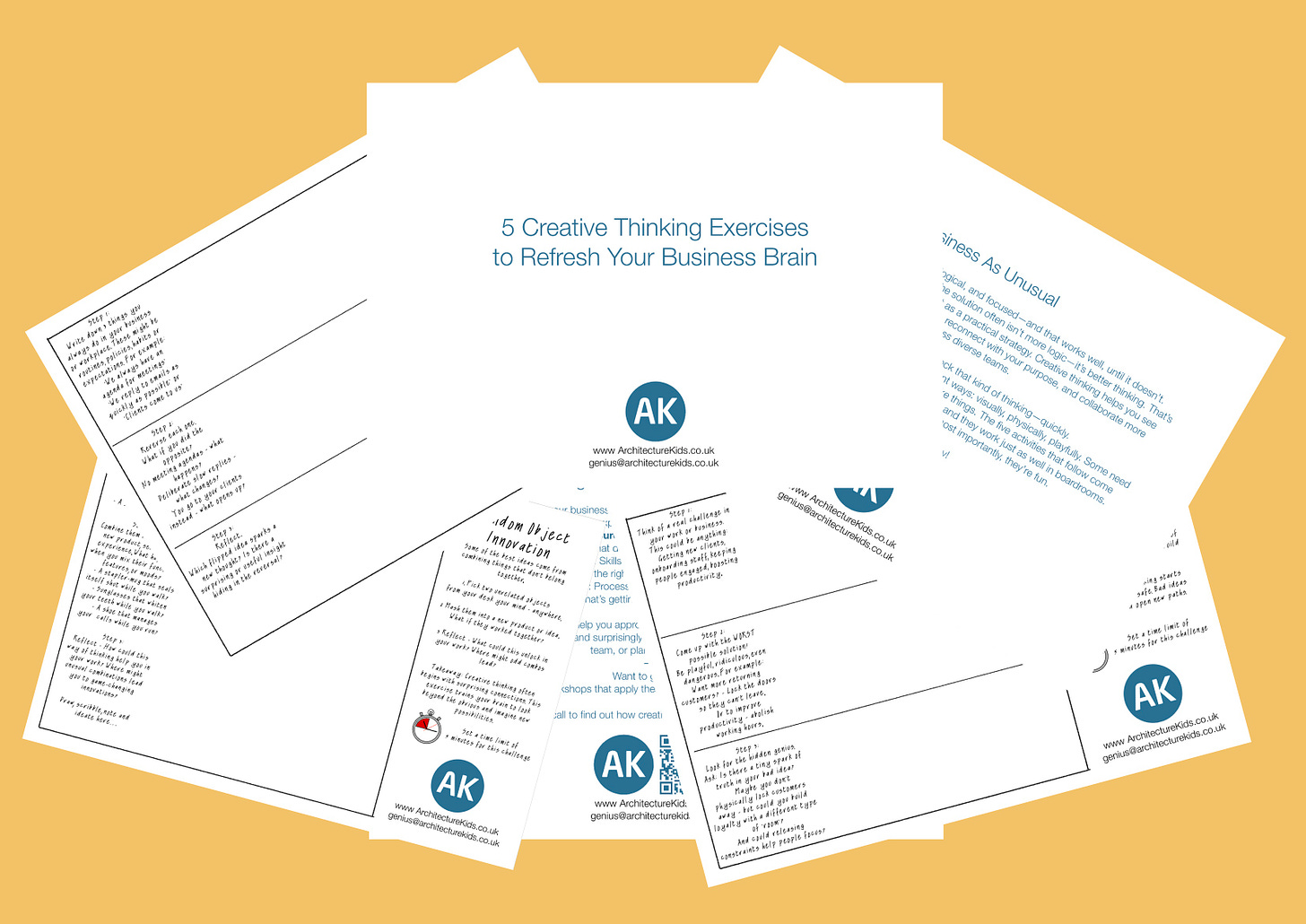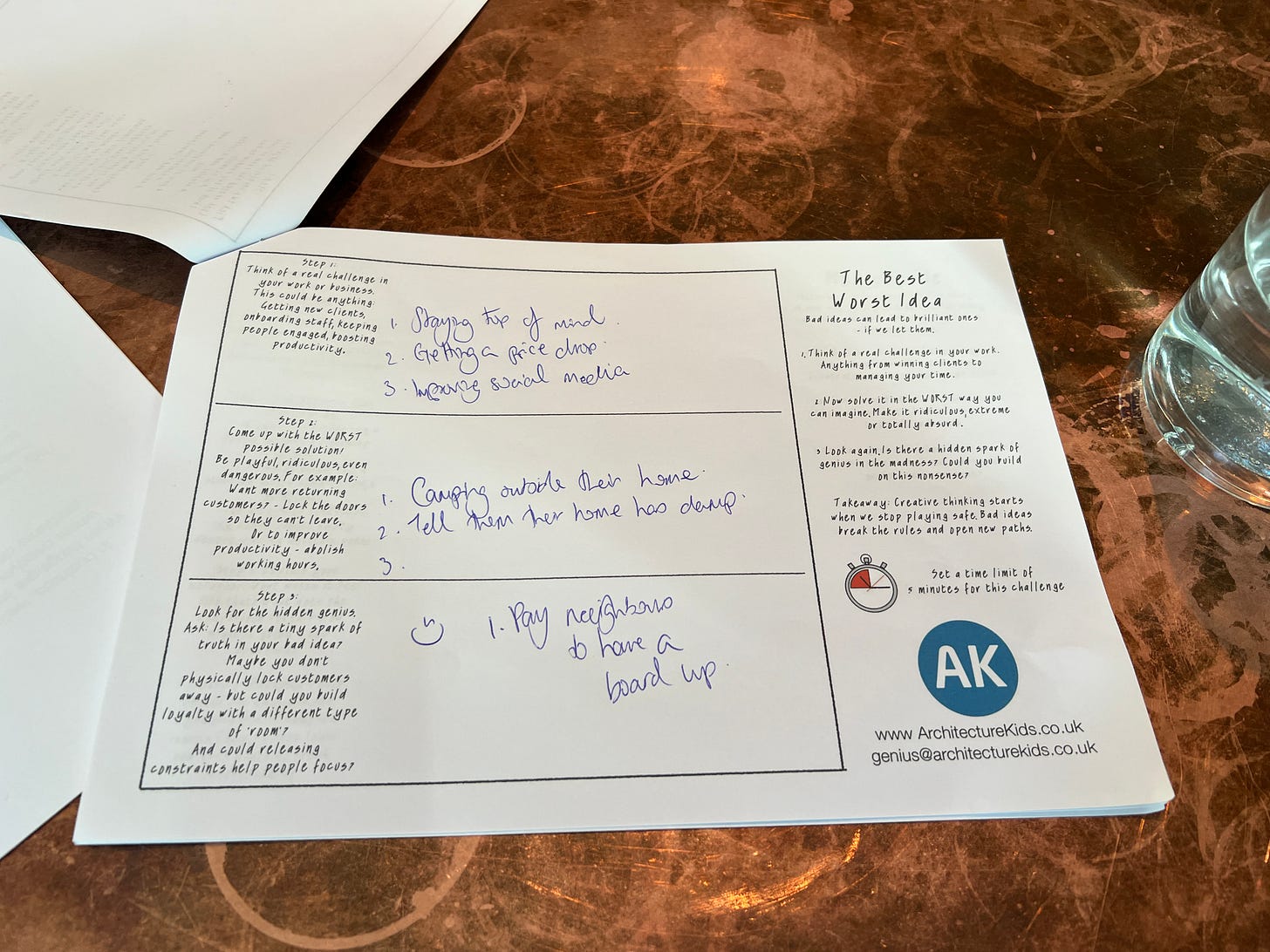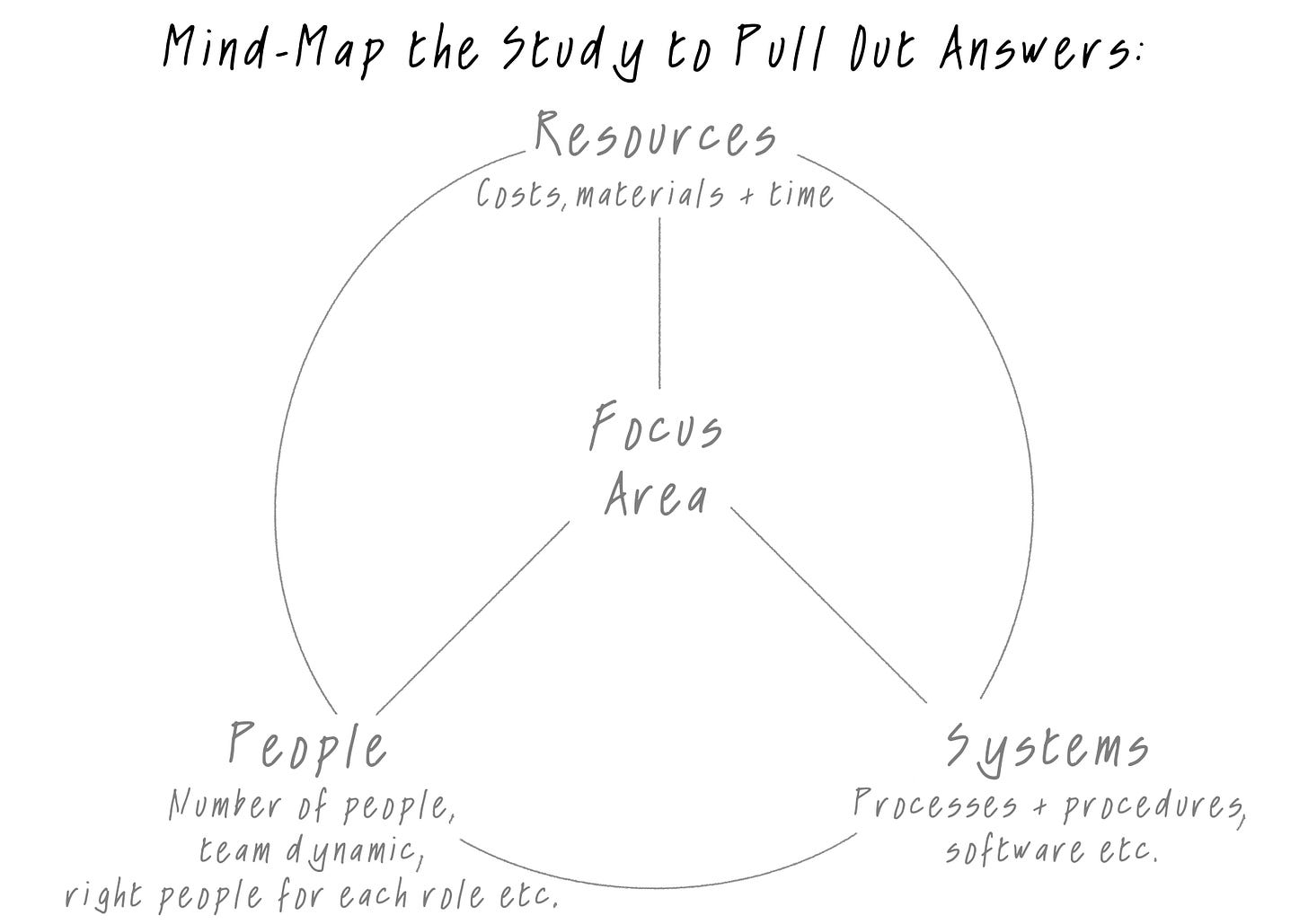5 Creative Thinking Exercises to Refresh Your Business Brain
Because the most powerful ideas often start with the strangest questions
In business, we’re taught to be efficient. Logical. Focused.
That’s all good, until it’s not.
Because when things get stuck, messy, or just plain dull, the answer often isn’t more logic. It’s better thinking.
That’s where creativity comes in, not as a luxury, but as a strategy.
Creative thinking helps you:
See problems from new angles
Discover unexpected opportunities
Reconnect with your values and vision
Collaborate better across diverse teams
Make room for play, curiosity and energy in your work
Most importantly, it honours different ways of thinking. Not everyone processes information in bullet points or spreadsheets. Some people need metaphors. Some need movement. Some need to build something with their hands.
Creative exercises are a way to make space for that kind of thinking…fast.
Below are five of my go-to activities from creative design workshops I run with everyone from 7-year-olds to CEOs. They’re short, surprising, and surprisingly useful.

🔄 1. Opsi Day (Reverse the Rules)
A 5-Minute Creative Thinking Challenge A short, powerful exercise to unlock fresh thinking for your work or business.
We all follow certain rules, routines, or assumptions in how we work. But what if we flipped those rules on their head?
Step 1: Write down 3 things you always do in your business or workplace.
These might be routines, policies, habits, or expectations. For example:
“We always have an agenda for meetings.”
“We reply to emails as quickly as possible.”
“Clients come to us.”
Step 2: Reverse each one.
What if you did the opposite?
No meeting agendas? What happens?
Deliberate slow replies? What changes?
You go to your clients instead? What opens up?
Step 3: Reflect.
Which flipped idea sparks a new thought? Is there a surprising or useful insight hiding in the reversal?
Takeaway:
This is creative thinking in action. No right answer. No wrong answer. Just new questions, new possibilities.
Creative thinking is a skill that can be practised and applied to every business. It’s not just for artists or designers—it’s for problem-solvers, innovators, and anyone ready to think differently.
💡 2. The Best Worst Idea (My Favourite)
A 5-Minute Creative Thinking Challenge A quick, fun way to unlock surprising solutions through the power of wrong answers.
Sometimes, our best ideas start where we least expect them, hidden inside the worst ones.
Step 1: Think of a real challenge in your work or business.
This could be anything: getting new clients, onboarding staff, keeping people engaged, boosting productivity.
Step 2: Come up with the WORST possible solution.
Be playful, ridiculous, even dangerous. For example:
“Want more returning customers? Lock the doors so they can’t leave.”
“To reduce emails - burn all the computers.”
“To improve productivity - ban lunch breaks.”
Step 3: Look for the hidden genius.
Ask: Is there a tiny spark of truth in your bad idea?
Maybe you don’t need to lock the doors - but could you build more loyalty?
Could limiting access help people focus?
Takeaway:
By removing the pressure to be right, we give ourselves permission to explore new directions. Bad ideas create space for bold thinking.
This is creative thinking in action. A simple way to reframe problems, spark innovation, and build confidence through play. Because in business, the best solutions often start with brave, bad beginnings.

🔀 3. Random Object Innovation
A 5-Minute Creative Thinking Challenge A playful exercise to connect unlikely ideas and unlock fresh innovation.
Some of the most creative breakthroughs happen when we combine things that don’t obviously belong together.
Step 1: Pick two unrelated objects.
Look around the room or just think of two random things. For example:
A stapler and a coffee mug
A pair of sunglasses and a toothbrush
A shoe and a smartphone
Step 2: Combine them into a brand-new product, service, or experience.
What happens when you mix their functions, features, or moods?
A stapler-mug that seals itself shut while you walk
Sunglasses that clean your teeth while you sunbathe
A shoe that charges your phone as you walk
Step 3: Reflect.
How could this way of thinking help you in your work? Where might unusual combinations lead to innovation?
Takeaway:
Creative thinking often begins with surprising connections. This exercise trains your brain to look beyond the obvious, and imagine new possibilities.
Great for marketing, product design, problem-solving, and sparking fresh energy when you’re stuck. There’s no wrong answer, just unexpected inspiration.
🐘 4. Metaphor It
A 5-Minute Creative Thinking Challenge A quick way to reframe challenges and uncover fresh insights through metaphor.
Metaphors help us see familiar things in new ways. They engage emotion, story, and perspective; key ingredients in creative thinking.
Step 1: Think of a current challenge in your business or work.
It could be something frustrating, exciting, unclear, or stuck.
Step 2: Now describe that challenge as…
A type of weather (e.g. a foggy morning, a lightning storm)
A kind of animal (e.g. a stubborn mule, a hummingbird, a goldfish)
Or a type of landscape (e.g. dense jungle, empty desert, winding mountain path)
Step 3: Explain your metaphor.
What makes it feel like that? What does the comparison reveal? How might it guide a new approach?
Takeaway:
Metaphors help surface the emotions and dynamics behind complex issues. They bypass logic and open doors to fresh understanding.
Use this exercise when stuck on a problem, exploring a brand, or trying to understand someone else’s perspective. It’s quick, personal, and packed with insight.
🚪 5. What’s Behind the Door?
A 5-Minute Creative Thinking Challenge A simple visual exercise to reimagine your business from the inside out.
When you walk into a space, you instantly feel something - warmth, chaos, focus, creativity. This exercise uses that instinct to help you explore the identity and feel of your business.
Step 1: Imagine your business is a physical room or building.
Picture it clearly. It might be a shop, a studio, a treehouse, a warehouse, anything.
Step 2: Now describe what’s behind the door.
What’s the lighting like?
What colours and textures do you see?
What’s happening inside? Buzzing activity or calm order?
Who’s there? What are they doing?
Step 3: Reflect.
Does this imagined space reflect how your business feels right now, or how you want it to feel? What would you change, add, or remove to make it more aligned with your vision?
Takeaway:
This exercise helps translate abstract values into concrete, sensory experience. A powerful tool for branding, team culture, customer journey design, and vision-setting.
There’s no wrong answer, just an invitation to see your work environment with fresh eyes.

✨ Why This Matters
These aren’t just games. They’re small experiments in reframing, showing people that the seemingly silly can lead to clarity, connection, and momentum.
When we loosen our grip on the “right answer,” we open the door to better questions.
That’s where real change starts.
📞 Let’s Talk
I run creative thinking workshops for “kids” of all ages—whether you're building your first rocket out of paper straws or leading a team through change.
If you’d like to:
Reignite creative energy
Build more inclusive, collaborative thinking
Bring design-led learning into your school, business or team
Schedule a free discovery call and let’s explore how we can work together.
Thank you for reading. We’d love to help you bring more creative, connected learning into your school or work place.
Best wishes,
Phil
Architecture Kids CIC
P.s. - Thanks for sticking around. Here’s a bonus sheet to add value to your fantastic creative thinking work:
Every challenge in business, whether it’s growth, clarity, motivation or innovation can be explored through three key lenses of -
Resources - Materials, money and time - i.e. What do you have? What do you need? What could be used differently?
People - Their skills, strengths, roles, relationships and numbers - i.e. Who’s involved? Are they in the right role? What hidden talents can be unlocked?
Systems - Your company’s processes, procedures. tools and software i.e. What’s working? What’s getting in the way? Where is change possible?

The creative thinking exercises above can help identify areas for further investigation. This mind-map sheet can help drill into this to help reveal further where solutions might lie.
Good luck and happy creating!
Phil



